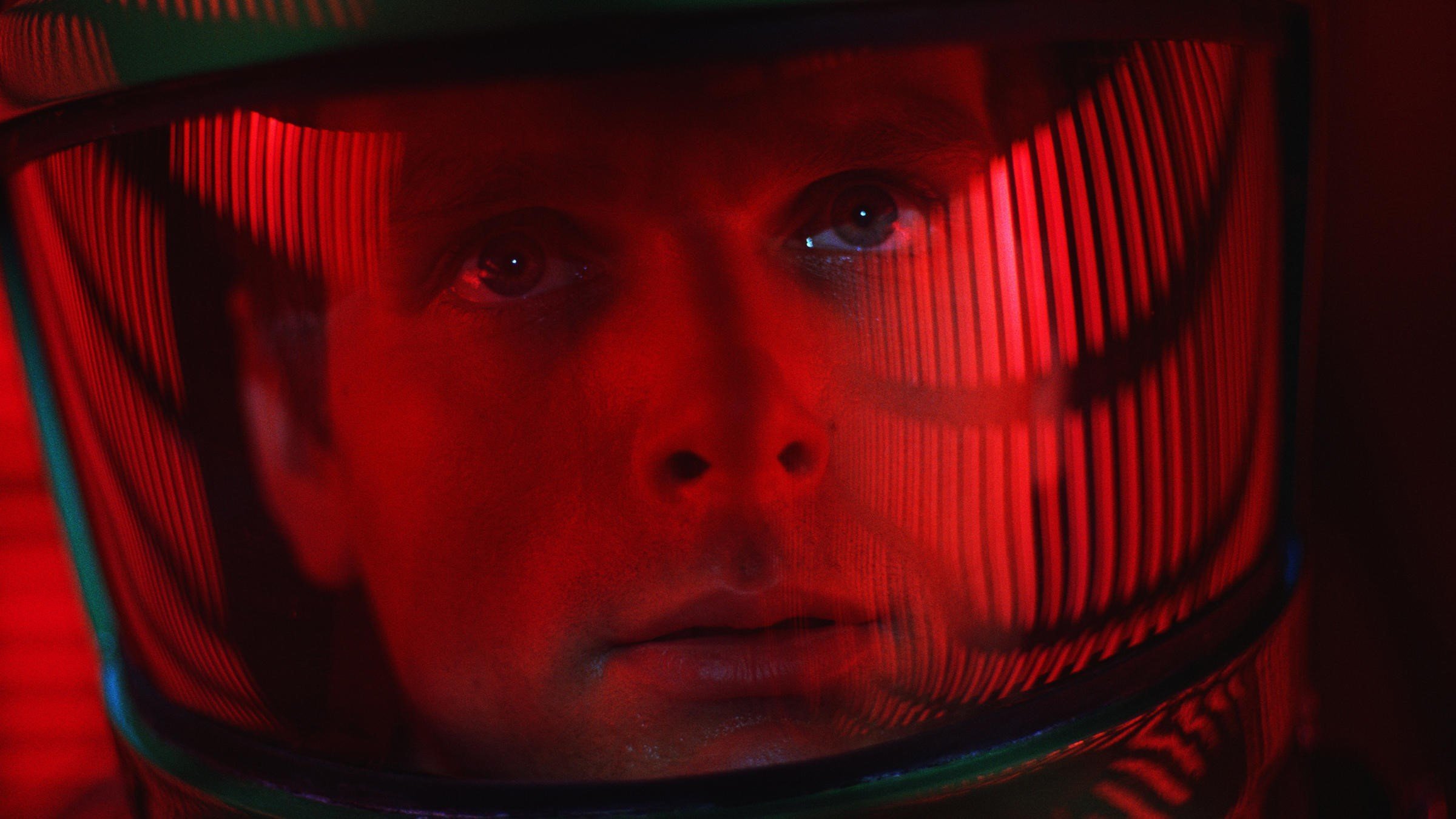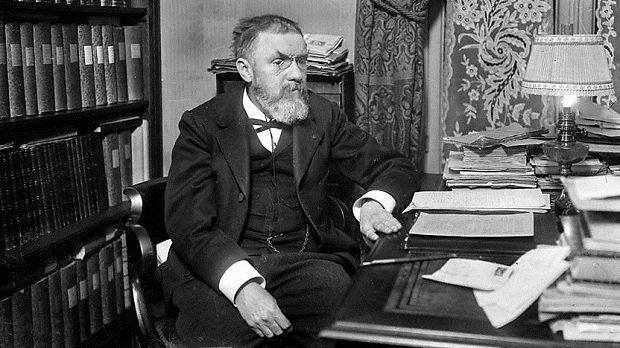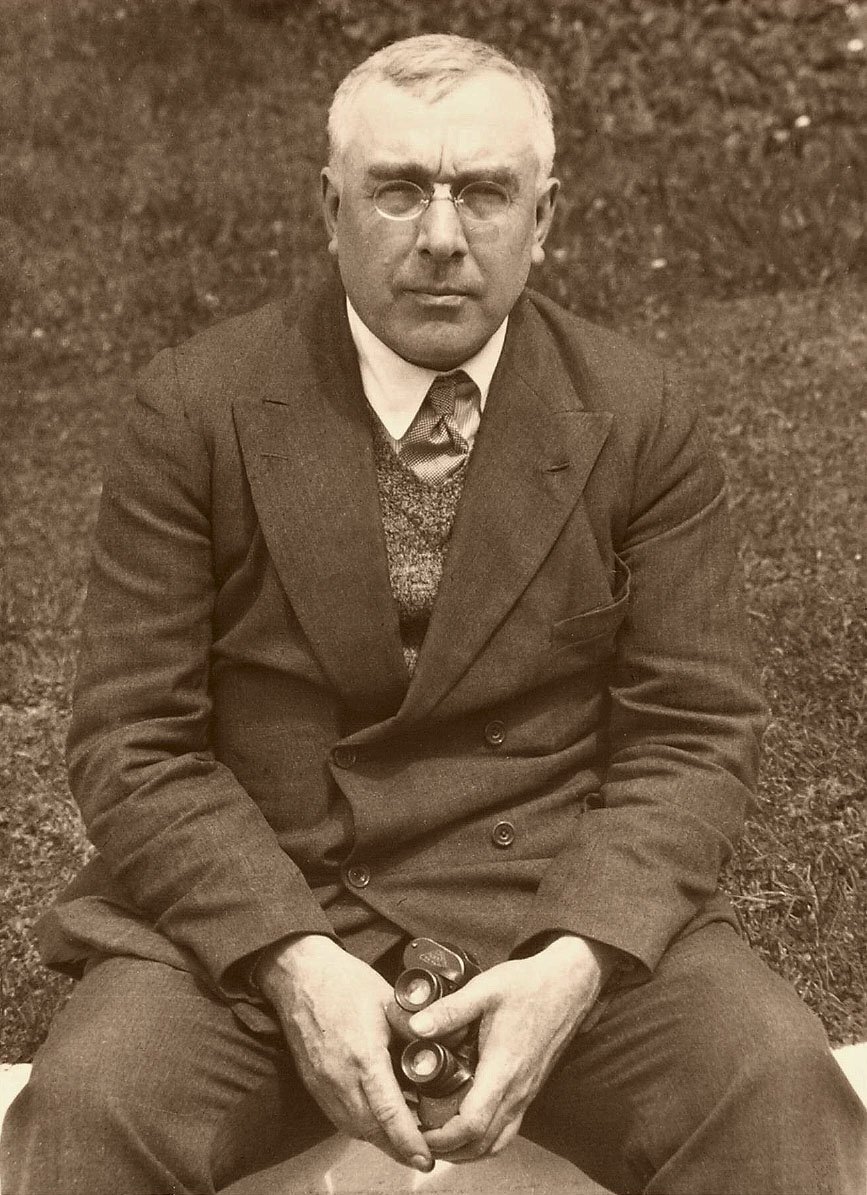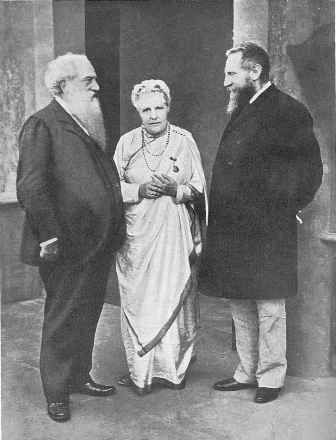The Ultimate Trip | Hyperspace Dialect & the DMT Doppelganger
THE SPACE AGE OFFICIALLY COMMENCED on October 4, 1957. Such conclusions were undoubtedly well-regarded by spectator sportsmen who beheld Sputnik 1 streaking across a starlit American sky with their own eyes. No surprise, thinking back on it all. It was only a matter of time and technological know-how before the Mysteries, in their various interwoven and self-enlightened forms, might conjure up a scenario in which mankind returns to the boundlessness of outer space, particularly to the stardust of our divine origin. While the whole of esoteric history has dismissed any such Scriptural notion that we derive from the dust of the ground in favor of the cosmic god-self, it wasn’t until the twentieth century when penetration of the firmament became a rich allegorical resource for the final frontier—more importantly, the journey into “inner-space.” Science-fiction is little more than a cerebral drama of self-discovery. Indeed, space has become the cosmic center stage of our very existence.
For science-fiction writers such as Arthur C. Clarke, Carl Sagan, and Gene Roddenberry, outer space was the theater they needed for the evolutionary advancement, not merely of technology, but the human condition.
Long before Plato divulged the secrets of the Mysteries, mainly globe earth and the ascension of the immortal soul, psychedelics and the Occult were at times indistinguishable from the other. So, one shouldn’t be taken aback when stopping to consider the frenzied resurgence of esoteric spirituality under the influence of LSD and other narcotics, all of which seemed to conveniently fall in perfect synchronicity with Cold War hysterics.
It was April of 1956, an entire year before the Soviet Union outplayed the United States bid to launch into “low Earth orbit,” when Chemist and psychiatrist Stephen Szara’s landmark pioneering bioassay into the space-time effects of DMT quite ironically documented the very language which NASA astronauts would later employ in the decade to come—but more on that in a moment. Dr. Szara initially began preforming a series of tests on animals. Take your average pessimistic cat, for example. At first frightened, Szara took note of his subject: “…when I injected the drug it became quiet and very friendly. This behavior lasted maybe for half an hour or so and then he started to be afraid and ran away.”
Szara wasn’t content.
He needed human recruits.
It is well-established but little-known fact, what keen interest the architects of Project MK-Ultra had in the war on psychological manipulation, particularly where the study of DMT is involved. A brainchild of the Central Intelligence Agency and coordinated with the Special Operations Division of the U.S. Army’s Chemical Corps., Project MK-Ultra is the code name given to a program of experiments on human subjects. Victims, really. This is often due to the fact that many of them were unwittingly duped into compliance. How many Manchurian Candidates were offered up to the MSM as graduates of the American government’s brainwashing program will likely never be known, especially considering the program was “officially” disbanded in 1973 and CIA Director Richard Helms ordered the termination of all documents. That’s the official story, at any rate. But make no mistake—Project MK-Ultra is still very much alive, and it has enveloped much of the entertainment industry today.
“With a healthy budget and top-level directives to secure state interests, the CIA bought the cooperation of doctors and scientists from across the United States and Canada, many among them champions of the psychotomimetic paradigm. Often working independently from one another and oblivious to CIA designs, this well-oiled research network gathered intelligence, often using unethical methods, on the effects of a veritable pharmacopoeia on human subjects (Graham St. John, Mystery School in Hyperspace).” Szara more than likely made a name for himself among these shadow operatives, and for anyone paying attention, made LSD look like a cheap beer in the process. He and his colleagues initially recruited thirty volunteers to receive doses of DMT at the Central State Institute for Nervous and Mental Diseases, Budapest. While under the influence of the psychedelic, one volunteer is documented as quoting:
“The whole world is brilliant…The whole room is filled with spirits. It makes me dizzy…Now it is too much! I feel exactly as if I were flying…I have the feeling this is above everything, above the earth.” And as the effects wore off: “It is comforting to know I am back on earth again…Everything has a spiritual tinge to it, but it is so real…I feel that I have landed.”
Some thirteen years later, Neil Armstrong would take one small step from the Sea of Tranquility, the highest point of his trip, quoting:
“Houston, Tranquility Base here. The Eagle has landed.”
Upon returning to Earth, Mission Control Center in Houston would message the Apollo 11 crew:
“Roger, Tranquility. We copy you on the ground. You’ve got a bunch of guys about to turn blue. We’re breathing again.”

In his book Mystery School in Hyperspace, author Graham St John compares these striking similarities between the exploration of inner and outer space. “Over the next decade, the sequence of events from launch into space > orbit > return to Earth were analogous to the sequence involved in a psychedelic trip (i.e., intake > high > landing), which explains why, during this period, space programs, the activities of astronauts and cosmonauts, and NASA radio dialogue, in particular, provided immediate allegorical resources for those undergoing psycho-activated rites of passage.”

|
David Bowman in 2001: A Space Odyssey |
Director Stanley Kubrick’s contribution to the inner and outer space race is somewhat perplexing, should a connection between Project MK-Ultra, psychedelics, and the Apollo moon landing deception not be understood or agreed upon. On July 20, 1969, there is good reason to suspect Kubrick as the actual Apollo 11 moon landing “stage director.” However, the most “acknowledged” film of his entire career was released only one year prior. 2001: A Space Odyssey still stands as one of cinema’s greatest monuments to “the ultimate trip.” It was even promoted as such at the time. In its mystifying and, some might argue, incomprehensible conclusion, astronaut Dave Bowman passes through the very mysterious black monolith which seems to show up among pivotal moments in evolutionary history, and is propelled on a space-time “trip” into the furthest passages of trans-human existence. Author Dennis McKenna, brother of DMT enthusiast Terence McKenna, has commented on the film.
“…the ‘light show’ at the climax, as David Bowman’s module is sucked into the hyperspatial portal, is close enough to the DMT ‘light show’ that many of us assumed the film sequence had been modeled after it…Like Bowman’s hyperspatial plunge into the monolith/portal, DMT brings with it a sense of rapid acceleration, of diving head-long into an overwhelmingly bizarre abyss, freighted with portentousness and hints of insect-like metamorphosis.”
The “supernatural” had been criticized, challenged, and outright ignored by the modernist of Science and industry-age thinkers for an entire century before Kubrick and writer Arthur C. Clarke’s cinematic vision came to be. Occultists needed a hidden pocket, if you will, not only for their hieroglyphic goddesses and spiritualist specters, but for the transcendence of their mind. The fourth-dimension gave them all the creative space they’d ever need. No wonder the fourth-dimension is something its critics once labeled a geometers fairyland.

|
Henri Poincare (1854-1912) |
That the “Hyperspace Theory” was inconceivable by any human means beyond Nth-dimensional geometry and linear algebra proved of little concern to the nineteenth-century fantasizer. With the fourth dimension, the occultist unveiled a hidden compartment by which their pixies and ghostly apparitions might be conveniently stored, and where the laws of physics needn’t apply— that is, until their insatiable appetite for the next séance should summon them to Newtonian conducts; and where shadowy specters for the trans-humanist mind might freely roam. Christians also wanted their fair share of the baggage. Besides, heaven no longer fit within the Copernican’s latest-greatest Apollo-centered cosmology. The MOST-HIGH was left homeless by Newtonian physics. The Newtonians had declared the very notion of “up” or “down” to be fashionably outdated wherever there is a globe and gravity retrofitted to it, which meant Scripture’s account of heaven’s “up-ness” could not possibly be taken at face value, if they—the Christian—should be allowed to play along. The Christians put their stamp of approval on that too—at least some of them, if only to be picked last on the team. And now, where the fourth dimension was involved, they too had a “plane”—ironically enough—an entire unexplored Universe of the mind to store their angels and demons, even their Platonic heavenly forms within.
And while they were at it, YAHUAH could reside there too.
The fourth-dimension found its initial calling with French mathematician Henri Poincare (1854-1912). For Poincare, the realm went beyond its geometric nature to penetrate perceptual “inner space.” His original 1880 article: What is the Fourth Dimension? would be subsequently reprinted another nine times. Poincare’s insight not only inspired Albert Einstein’s Theory of Relativity, but presented Pablo Picasso with such a quandary as to whip up his lifetime devotion to Cubism. Not surprising, since the fourth-dimension is perceived as the realm of the psyche. Art acts as a receiver to the higher realm—so to speak, achieving telekinesis where science cannot. Its career strengthened through Charles H. Hinton (1853-1907), an untenured mathematics instructor at Princeton. For Hinton, the fourth dimension was a mathematical concept represented by the cube, which essentially entailed our higher and immortal self. In his book, Mystery School in Hyperspace, author Graham St. John writes:
“Hinton developed his views on the mystical and evolutionary significance of four-dimensional space. The fourth dimension was perceived to be the source of alternative modes of consciousness like those experienced by mystics, psychics, mediums, and others with evolved means of perception. For Hinton, the fourth dimension was not a mathematical abstraction, but a mode of perception integral to the development of human consciousness.”

|
Peter Ouspensky |
Russian theosophist Pyotr Demianovich Ouspenskii (1878-1947), or simply Peter Ouspensky in English, found reason for lasting disappointment with Hinton, whose work he personally translated into his own native tongue. Albert Einstein mutually agreed, albeit indirectly. Hinton’s exercises, which hoped of deducing fourth-dimensional awareness for himself and his fellow observers, were restricted to mathematical parlor games and landlocked lab experiments, and therefore severely handicapped what may have otherwise been an advantageous outcome. Wrote Ouspensky: “In art it is necessary to study occultism—the hidden side of life. The artist must be a clairvoyant: he must see that which others do not see; he must be a magician; must possess the power to make others see that which they do not themselves see, but which he does.”
Theosophists Annie Besant and Charles Leadbeater, co-authors of Thought-Forms (1901), neatly summed up the hallmark of Victorian theory. For the Victorian, wildly in pursuit of new ideas and hidden gods of the mind, his psychological was the transcendental. Or as the two put it, “thoughts are things.” More precisely, visitation to the astral-plane was akin to a form of four-dimensional sight. Leadbeater writes: “We must beware of falling into the fatally common error of supposing that what we see is all there is to see.”

|
Annie Besant with Henry Olcott (left) and Charles Leadbeater (right) |
Perhaps not so dissimilar theologically from Nikolai Kibalchich (a fellow Russian and revolutionary rocket pioneer who believed humanities ultimate self-salvation would be triumphed through a technological and spiritual blending of transhumanism), Petr Ouspensky believed: “the evolution in consciousness was to be achieved through the development of a culture that augments the new consciousness and causes it to flourish.” In ‘The Occult in Russian and Soviet Culture,’ Bernice Glatzer Rosenthal writes: “That astronomy grew out of astrology and chemistry out of alchemy is well known, but the links between the occult and modern psychology are yet to be generally recognized. Occult doctrines appealed to people who were interested in what was then called the ‘inner man,’ the soul of the psyche, which rationalists and empiricists neglected or even disdained.” Ouspensky regarded the fourth dimension as a way to escape from death into the real world of the spirit. As an occultist, Ouspensky not only wrote about the mystical potentials of yoga, breathing exercises, dreams, prayer, fasting, and tarot card reading, he even held private conversations with the devil. Through experiments in modified states of consciousness combined with nitrous oxide and hashish, he once had a vision of Linga Sharira. Again, Graham St. John writes:
“A theme lifted from Blavatsky’s The Secret Doctrine—itself adopting Hindu philosophy, where this idea infers the form on which our physical body molded—this referred to a four-dimensional “temporal body.”
Helena Blavatsky defined Linga Sharira in The Key to Theosophy. Here she writes: “This term designates the doppelganger or the ‘astral body’ of man or animal. It is the eidolon of the Greeks, the vital and prototypal body; the reflection of the men of flesh. It is born before and dies or fades out, with the disappearance of the last atom of the body.” Blavatsky believed everything in the Universe was conscious—endowed with a consciousness of its own kind and on its own plane of perception. The Universe was the periodical manifestation of this unknown Absolute Essence. Conclusively, the Absolute was “beyond the range and reach of thought.” The key to attaining higher consciousness lay in one’s own ability to change their perception of time, mainly escaping the limitations of the present moment. Blavatsky looked to the fourth-dimension.
While the Victorians and the late nineteenth-century Russians perfected the ideal fourth-dimension, oddly enough it was philosopher Immanuel Kant who first gave notice to the concept. In Thoughts on the True Estimation of Living Forces (1747), he wrote: “if it is possible that there are extensions with other dimensions, it is also very probable that God has somewhere brought them into being; for His works have all the magnitude and manifoldness of which they are capable.” Three decades later, while penning The Prolegomena to Any Future Metaphysics (1783), Kant would inquire:
“If all space were empty but for a single human hand, would it make sense to ask whether that hand was specifically a right hand?”
In a four-dimensional space the notion of a distinct gender becomes obscured, to say the least. Like Kent’s hand, it may appear as a right hand or a left hand, depending on the observer’s position. So too might a male appear as female, or a female as male. Accordingly, if our astral-plane doppelganger, our true fourth-dimensional self, cannot be identified, then we as Christians have serious theological problems. French author Jean Clair, in Sur Marcel Duchamp et la Fin de l’Art, sums up why:
“We are sometimes given a vagina—and that designates a “woman”—virgin, bride, etc.—and sometimes a penis—and that indicates a “man”—bachelor, groom, etc. This physiological accident was never anything more than the effect of an assuredly ironic causality: the laws of Euclidian geometry. In a four-dimensional study … vagina and penis, like an anamorphic illusion, would immediately lose all distinctive character. It is the same object that we would sometimes see as “male” and sometimes as “female,” in this perfect mirror-like reversal of the body that presupposes, because it takes place, the existence of a fourth dimension.”
Yet again, we find ourselves fumbling miserably through a dark room, slapping at the wall for a light switch. What if the fourth-dimension was nothing more or less than another humanist invention, a furniture piece for his temple—that is, the delusional catacomb of the mind? For the truest humanist, there is no absolute except for what he might ascertain in the warped perversions of his imaginations. Like evolution; like the theory of relativity used to support the globe itself; the so-called fourth-dimension is yet one more dizzying piece to the behemoth puzzle. It’s nothing more than a walk-in closet for the esoterists, and we must—we simply must climb out of it.
Almost as though this were a scene from The Matrix, Russian theosophist Peter Ouspensky invokes a picturesque moment in the life of the self-enlightened soul who “wakes up” from the superficial created order that supposedly, like a well-oiled machine, binds us as slaves. He writes: “Attaining consciousness is connected with the gradual liberation from mechanicalness, for man is fully and completely under mechanical laws.” If the Christian should possess a lick of discernment within us, we can see where this originated, and where this is going.
French existentialist Simone de Beauvoir cleans the platter up nicely, as one who has transcended from the higher realm, when famously claiming:
“One is not born a woman. One becomes one.”

2
SUCH CONCEPTS PRACTICALLY BECAME the bed which science-fiction authors like Gene Roddenberry and Arthur C. Clarke chose to lie in because now they could circumnavigate the prohibition beyond third dimension space-time with the acroamatic laws of “warp drive,” as it is sometimes known among fans of their work—a logic which depends on the metaphysics of higher, though unprovable and scientifically untestable, dimensions as its logical crutch. Here, in the technological advancements of hyperspace, evolutionary transcendence could finally hold its legitimate scientific merit.
“Hyperspace became a powerful literary device—the source of energetic powers and capabilities that enhance and transform normal human abilities (Graham St John).” Consider Luke Skywalker and the plight of his newfound droid friends in the original Star Wars. Here on a binary-sun scorched planet we find a simple farm boy, having never traveled beyond his own dust-cropping homestead, which happens to lie in the furthest rim of the galaxy. He’s taken up the old wizard’s invitation to become like his father before him and learn the mystical magic of an all-penetrating force. He’s an insider now—as esoteric knowledge goes. And quite suddenly, when a tyrannical Empire bears down upon him, Luke finds himself sputtering forward through hyperspace in order to escape what would otherwise prove his certain doom. Skywalker has ascended spiritually above the capabilities of our own human experience—and though the movie is far from over, already we can conclude that his life will never be the same. For Terrence McKenna, the entry of our species into hyperspace essentially meant his mind was released into imagination.

|
Luke Skywalker’s first trip into hyperspace, Sar Wars (1977) |
There is a common experience with DMT and space-time. “Those who partake sense they are ‘away ’longer than the duration measured on the clock,” says Graham St. John. Dr. Rick Strassman, author of DMT: The Spirit Molecule, conducted studies with DMT among five-dozen subjects at the University of New Mexico. One of his volunteers, Sara, a member of the Wiccan community, described her own hyperspace experience while on the drug.
“There was a sound, like a hum that turned into a whoosh, and then I was blasted out of my body at such speed, with such force, as if it were the speed of light. The colors were aggressive, terrifying; I felt as if they would consume me, as if I were on a warp-speed conveyer belt heading straight into the cosmic psychedelic buzz saw. I was terrified. I felt abandoned. I’m completely and totally lost. I have never been so alone. How can you describe what it feels like to be the only entity in the universe?”
I don’t think it’s possible that the 1960’s could have been “the SIXTIES” without the involvement of its high-priest, Timothy Leary and his band of Merry Pranksters. Writing the foreword to Alan W. Watts the Joyous Cosmology, Leary asks us to ponder this question. “What are these substances, medicines or drugs or sacramental foods? It is easier to say what they are not. They are not narcotics, nor intoxicants, nor energizers, nor anesthetics, nor tranquilizers. They are, rather, biochemical keys which unlock experiences shatteringly new to most Westerners.”
By most westerners, I take it, the High Priest of sacramental metabolism is referring to Christendom. And when he speaks of experiences, I naturally conclude he is referencing the very forbidden fruit which our founding parents once partook of and which equally instituted the Mysteries to come, let alone heaved all of their descendants into an eternal separation from the MOST-HIGH. With the space race, so too the Occultists had their coveted and long-prophesied sigh of relief. Their ancient religion “from a more civilized age” had manifested a new creed in the very acreage where heaven once dogmatically stood, and most importantly, they had the gullible Christian to go along with their schemes.
In a way, the Mysteries are no more. It is not the tree of knowledge of good and evil which the occultists are after. That sacrament is available to all—to anyone who wishes to partake of it. The psychological pathologies which Christians have long held to be the damnable sinful nature of man are now suddenly reckoned to be conditions which might be improved upon through a technological evolution—to anyone who’s paying attention. YAHUAH placed angels with flaming swords in the garden for a guarded purpose. We know where this space race has set its sights.
It is the tree of life—immortality—they’re after.